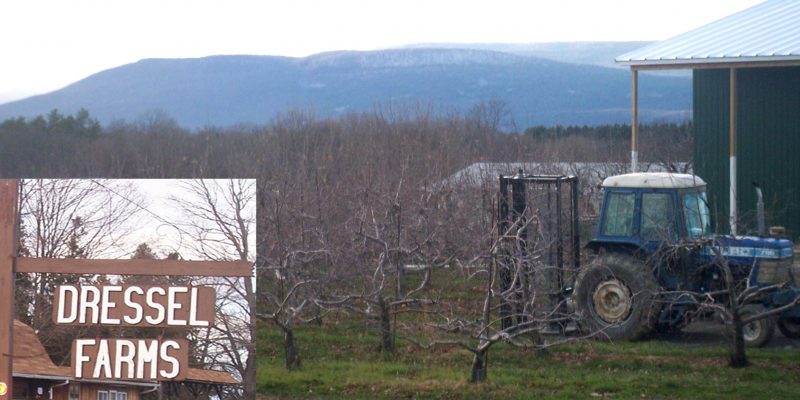
Editor’s Note: This is the first in a series of articles about Gardiner’s working farms.
It was 87 years ago that a newly married couple named Fred and Beatrice Dressel left a small dairy farming town in central New York to seek their fortune in the Hudson Valley. In 1923, Fred and Beatrice became the farm managers of the Ruloff and Ada Dubois Farm on Route 208. Ruloff and Ada Dubois were a childless couple who owned 150 acres that had passed down from the original settlers in the 1700’s. There was a small diary, but the cash crops for the business were apples and sour cherries. The Dressels flourished on the farm, had two children, one of whom, Roderick (Rod), was destined to carry on the farm for the Dressel family.
In 1941, Ruloff Dubois passed away. The Dressels continued to manage the farm for Ada DuBois until she, too, passed away in 1956. It was then that Fred and Beatrice purchased the farm from the DuBois’ estate, and only a year later that Roderick graduated from SUNY Cobleskill College of Agricultural and Technnology with a degree in pomology, the study of growing and marketing fruit. He also brought home his bride, Ethel, who had graduated from Cobleskill with a degree in business.
In 1959, the Dressels built their first cold storage unit. They rented land from the surrounding neighbors to plant fruit on Route 208 and Phillies Bridge Road. Eventually, the land was purchased and the farm is now over 500 acres. The business has entered the fourth generation of Dressels. Rod and Ethel’s two children are both growing fruit. Joy and her husband and their three children run Crist Brothers Orchards in Walden. Rod Jr. and his wife, Deborah, and their son, Tim, work the home farm as the third and fourth Dressel generation farming the land.
Farming for the Dressel family is not a hobby, it’s a business. At any given time, employee count ranges between 25 people in winter and 60 people during peak season. In farming, the business is susceptible to weather, available labor, government regulation, media rumors, community support and a host of other variables. As Rod says “the best fertilizer a farmer can leave on the land is his footprint.”
When asked how the community could help Dressel Farms remain farmland, Rod talked about the vast amount of government regulation that strangles the small farmer with paperwork, and which is going to get worse (see related article, “Food vs. Safety,” page 10). Rod feels that talking to our local representatives about this problem could help. A community commitment to preserving farms is helpful, too, because farms generate a lower demand for public services and have a positive effect on our tax base (see related article, “Support for Gardiner’s Farms,” page 9).
